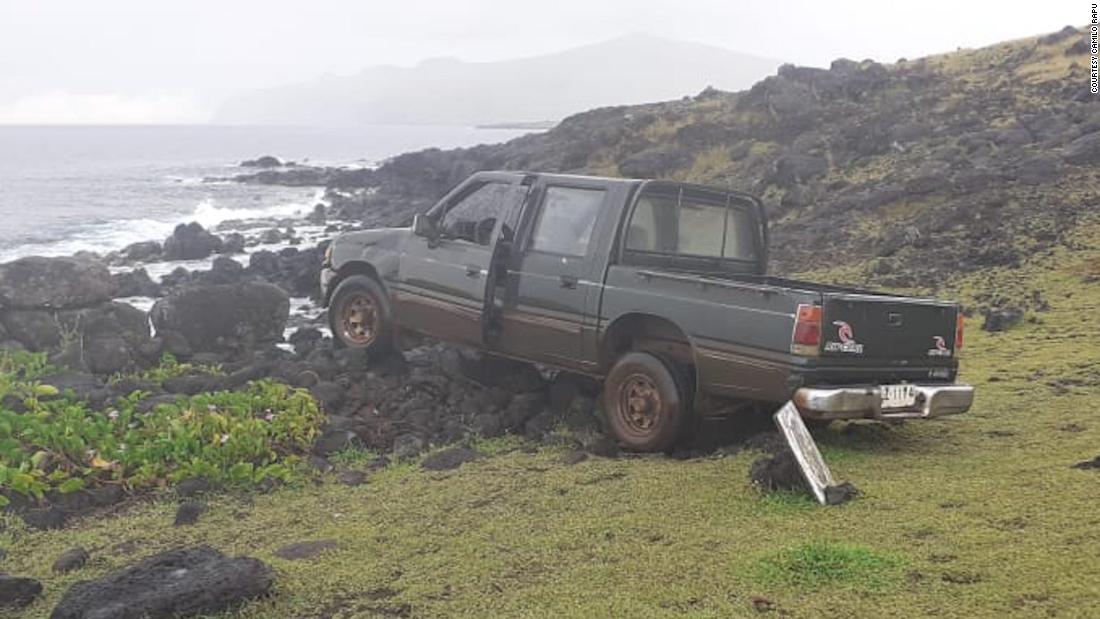Products You May Like
A Chilean island resident was arrested on March 1 after his truck — a private vehicle, not a commercial one — crashed into one of the stone figures and badly damaged both it and the ahu, or platform, it was perched on.
Local authorities believe that the accident was caused by brake failure that caused his truck to slide downhill.
On the island, which is known as Hanga Roa by its native Rapa Nui people, the enormous stone heads called moai have long been a source of intrigue and wonder.
“The damage is incalculable,” Camilo Rapu, president of Easter Island’s indigenous Rapa Nui community, told CNN in a statement.
The island’s mayor, Pedro Pablo Petero Edmunds Paoa, is calling for stricter regulations that will prohibit vehicles from driving near the 1,000-odd moai on the UNESCO World Heritage-listed island.
“The Moai are sacred structures of religious value for the Rapa Nui people,” Rapu said. “Furthermore, [the damage of the moai] is an offense to a culture that has lived many years struggling to recover its heritage and archaeology.”

Moai were carved from solid basalt between the 13th and 16th centuries.
Tourism Chile
Easter Island, a Polynesian island that is a territory of Chile, has long struggled to balance its status as a bucket list travel destination with the local Rapa Nui people’s desire to protect their heritage.
Overtourism has been a major concern as the island became easier to access from the mainland, bringing more travelers.
“There are 1,000 statues and there are 5,000 people,” Van Tilburg said. She urged visitors to the island to show respect for the Rapa Nui community and to engage local guides and services in order to make sure tourism revenue stayed on the island.

